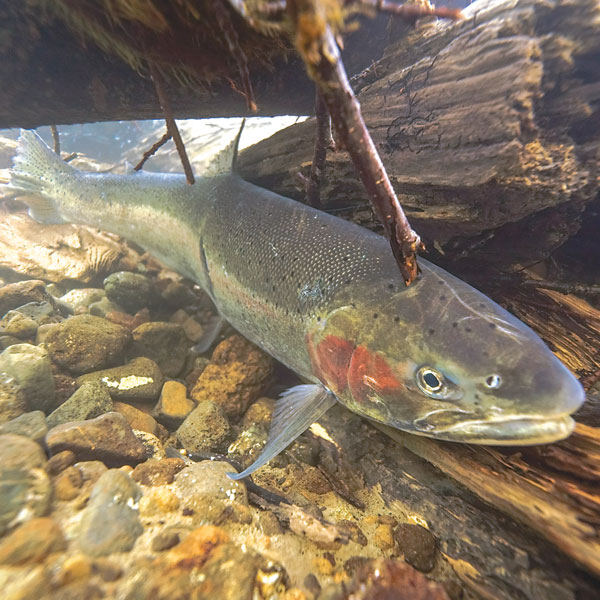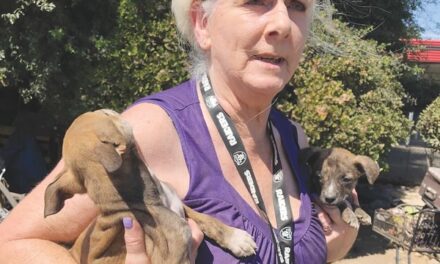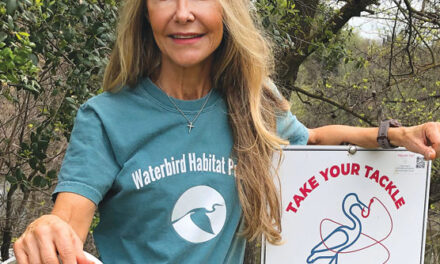The green sturgeon is an ancient creature. This “river dinosaur” dates back 220 million years. Today he thrives in local waterways.
The southern green sturgeon spawns in a small segment of the Sacramento River and uses the lower American River for juvenile rearing.
Despite the green sturgeon’s resiliency, the species is listed as threatened under the federal Endangered Species Act.

The American River is also home to steelhead trout and four chinook salmon runs—winter, spring, fall and late fall. The winter salmon run is endangered under the species act. The spring salmon run and steelhead are threatened.
High water temperatures, habitat destruction, loss of streamside trees, dredged rivers, insufficient freshwater flow, contaminants and barriers that impede migration contribute to the declines.
Which is why community groups such as American River Trees question the U.S. Army Corps of Engineers erosion-control work along the lower American River.
The project, known as Contract 3B, targets several miles from the Howe Avenue bridge to east of Watt Avenue as part of the Corps’ flood-protection strategy.
While spawning is limited in the Contract 3B river stretch, “we see all four runs, as well as steelhead and green sturgeon, using the lower American River as rearing habitat for juveniles,” says Lyla Pirkola, natural resource management specialist with the National Marine Fisheries Service.
Nearly 700 trees, including about 60 heritage oaks, are scheduled for removal.
Tree canopies cool the river, critical for spawning and rearing chinook, steelhead and green sturgeon. “When they take the trees away from the edge of the river, that allows the river to heat up,” says Pete Spaulding with American River Trees. “The temperature is critical to the health of the embryos.”
Pirkola, who consults with the Army Corps on projects, including Contract 3B, confirms the importance of tree canopy. “There are absolutely water quality effects associated with having vegetation, and particularly overhanging vegetation, removed,” she says.
Tree roots and branches in the water offer the young fish protection from predators and places to feed. Insects falling from riverside plants provide food.
Chinook, steelhead and sturgeon need cool, flowing water to thrive. They need clean gravel to create underwater nests (called redds) to spawn. “They need a mixture of different size rocks and pebbles so they can work their way into nooks and crannies and be protected,” Spaulding says.
The Army Corps’ design includes installing riprap (human-placed rock and rubble to protect shorelines) along the riverbank to prevent erosion. The Corps says the submerged riprap, filled in with cobble, will provide protection for fingerlings.
Spaulding disagrees. “Big rocks that are angular shaped do not afford the same protection for embryos and fingerlings,” he says.
When newborns begin to feed on their own, they will move out of the gravel environment and forage in the riparian areas. “What the Army Corps is removing are rearing habitat and vegetated areas,” Pirkola says.
To mitigate the loss of vegetation, the Army Corps will install “planting benches” along the river’s edge. Woody debris and root balls are designed to provide immediate protection for fish until the planting benches are established.
Spaulding notes erosion at planting benches added during previous Army Corps work at Sacramento State and Campus Commons is already exposing riprap, potentially preventing vegetation from fully returning.
“There are going to be some issues,” Pirkola says. “But because they are replanting on site, the idea is that at some point in the future the shade will be regained.” She points out the Army Corps has long-term management plans to ensure the sites are successful.
But plantings take years to return. Heritage oaks take generations. “The buried riprap will prevent larger, deeper-rooted trees from ever growing again,” says Bill Brattain, a civil engineer and consultant who lives along the river parkway.
To avoid impacting the chinook and steelhead, the Army Corps says it will only allow construction outside regular spawning and migration periods.
But four seasonal chinook runs mean migrating, spawning and rearing are almost continuous. “With all four of the runs existing, it’s impossible to avoid every life stage of every run,” Pirkola says. “There is some life stage of some run at all times in the system.”
She adds there are work windows to avoid the two salmon runs listed as endangered and threatened. During in-water work, the Army Corps is required to minimize negative impacts on water quality, such as using plastic barriers to manage sediment stirred up by heavy machinery that impacts “the fishes’ ability to see, forage, hunt and breathe,” Pirkola says.
But some threats are unavoidable. For example, as bottom-feeders green sturgeon feed on clams and mussels. While the juveniles are “hanging out and feeding as they grow and get ready to move to the ocean … there could be impacts on their prey availability,” Pirkola adds.
Salmon, steelhead and sturgeon have survived in West Coast waters for millions of years, enduring industry, agriculture, mining, forestry and urban development.
Now they face new challenges in the lower American River.
UPDATE: The Army Corps has announced that, due to extensive public and agency comments, erosion-control work along the lower American River will not begin in 2025, as originally planned. The earliest will be 2026.
Cathryn Rakich can be reached at crakich@surewest.net. Follow us on Facebook and Instagram: @insidesacramento.
















